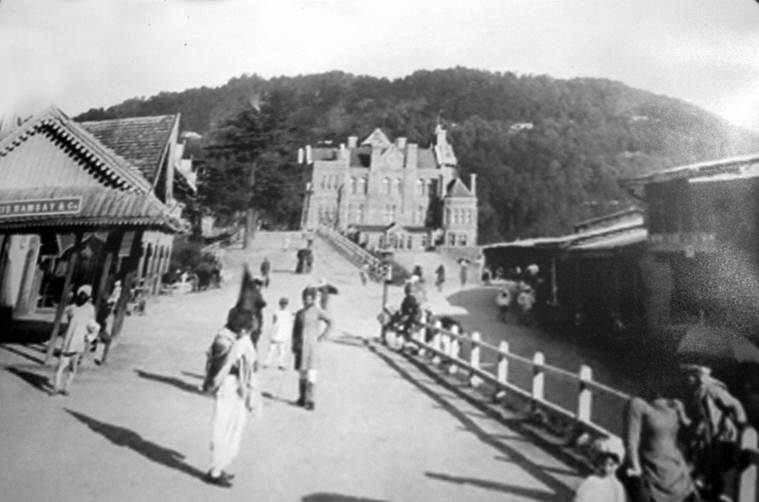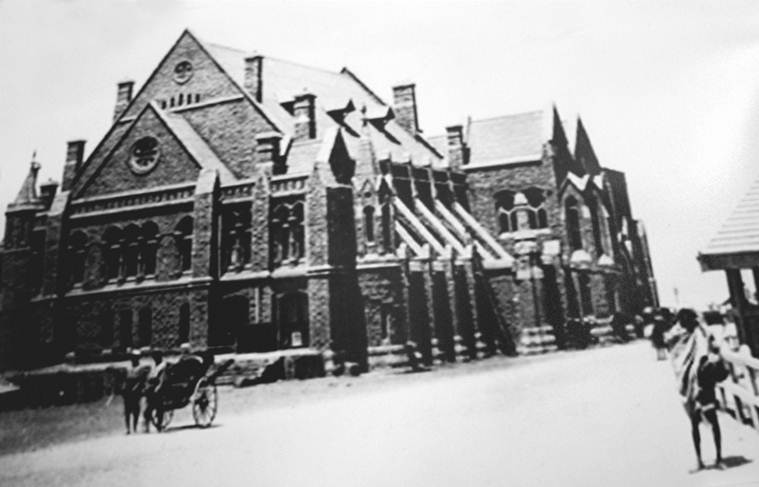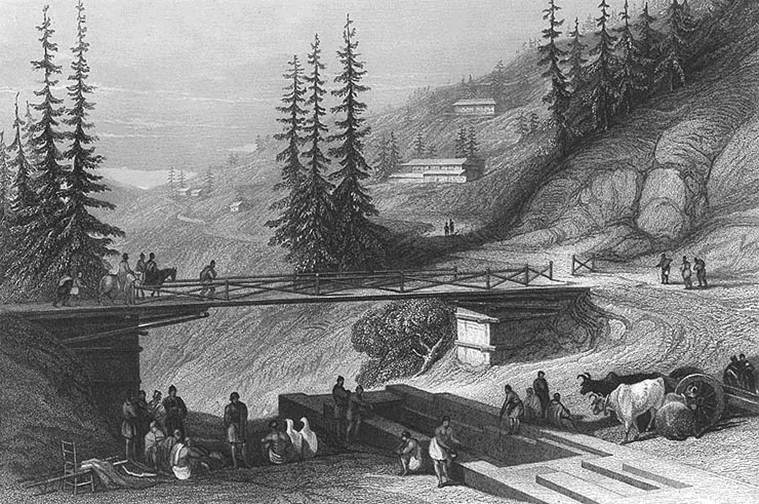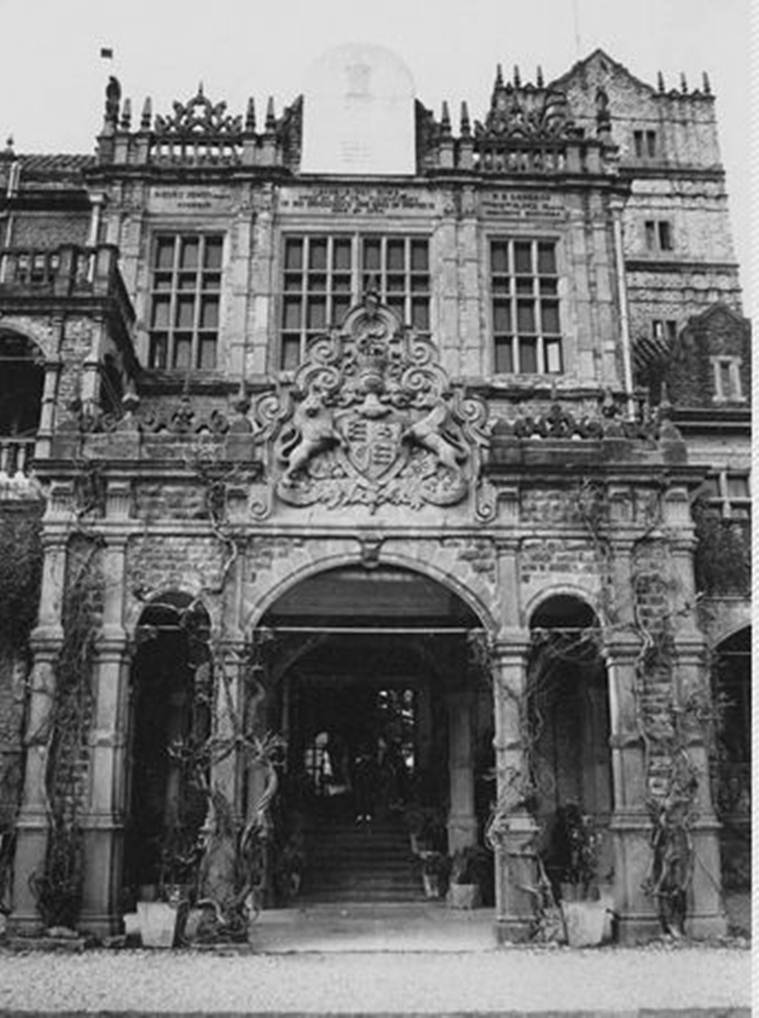- India
- International
Shimla could have been named after Goddess Shamli, but there was no Simla before the British
The British did not just lay the foundation stone of an urban civilisation in the hilly district but also developed it with roads, transport, and bridges.
 Shimla, as we know it today though, can be safely said to be a product of British enterprise. (Express Photo)
Shimla, as we know it today though, can be safely said to be a product of British enterprise. (Express Photo)
In 1817, when British officers James and Alexander Gerard were busy exploring the Sutlej river valley in the Himalayas they came across a small village the East India Company had recently acquired after fighting off the Gurkhas from the territory. In their notings of the place, the Gerard brothers wrote of Simla as a “middling-sized village where a fakir is situated to give water to the travelers”. “We encamped on the side of Jakhu, and had an extensive and beautiful prospect,” they wrote.
About two years back the British had expelled the Gurkhas from the Simla hills with the help of local chieftains, and the Resident, Sir David Ochterlony, announced the annexation of the hills. Before the struggle between the British and Gurkhas though, the history of this region is rather hazy. In his book ‘Shimla then and now’, journalist and author Vipin Pubby notes that two centuries before the British took over what is now modern-day Shimla was nothing more than dense forests with a few scattered houses being the only kind of civilisation. “There is hardly any pre-colonial history. It was never a cohesive unit. Smaller regions and kingdoms were situated there and they remained under the occupation of different rulers,” says Pubby to indianexpress.com.
 A view of Old Gaiety Theatre historical building at Shimla.( Express Archive Photo)
A view of Old Gaiety Theatre historical building at Shimla.( Express Archive Photo)
As far as the name of the territory is concerned, some assert that the name is derived from a solitary house called ‘Shamlaey’, while others believe that it is rooted in the name of Goddess Shamli, an avatar of Goddess Kali. “The village was called Shyamala after the goddess of the place there. Even the earliest revenue records mention the name to be Shyamala. But because the British could not pronounce the name, they made it Simla as it was known till very recently,” says Pubby. Lately, the BJP-led government in Himachal Pradesh is considering to rename the hill station’s as ‘Shyamala’, as is believed to be its origins. The demand made by some Right-wing Hindu groups is part of an effort to remove all symbols of British rule.
Shimla, as we know it today though, can be safely said to be a product of British enterprise. Once they fought out the Gurkhas they decided to hold on to the territory on account of its strategic location. “It was an advantageous spot for recovery from the great chiefs of northern India,” notes the 1887 Imperial Gazetteer of India. The British did not just lay the foundation stone of an urban civilisation in the hilly district, but also developed it with roads, transport and bridges. Later, in 1863, the Viceroy of India John Lawrence declared it to be the summer capital of the colonial rulers. “There is no previous reference to the area in any historical books before the British came. They thought it was similar to some of the places back home and certainly a cooler place than Calcutta which was the capital at that time,” says Pubby.
 A view of Old Gaiety Theatre historical building at Shimla. (Express Archive Photo)
A view of Old Gaiety Theatre historical building at Shimla. (Express Archive Photo)
A newly acquired British territory
When the British first acquired the territory in 1815, they paid hardly any attention to it. It was only in 1819 that the Assistant Political Agent in Hill states, Lieutenant Ross, set up the first British residence there. The small wood cottage marked the beginning of a settlement that would go on to play a crucial role in colonial and independent India’s history.

Three years later, Lt Charles Pratt Kennedy built the first pucca house in the area. The Kennedy House as it is still referred to, consists of several government offices and lies close to the Himachal Legislative Assembly building. By the 1820s though the Kennedy House and its surrounding areas had started attracting British officers where they went to spend their vacations as it reminded them of their country and climate. Overtime, several British officers were also building properties in the region.
Soon after, Lord Combermere, the Commander-in-Chief of the British in India, visited Shimla and constructed a three-mile road and a bridge there. “The construction of the wooden bridge by Lord Combermere was one of the first developmental activities undertaken by the British in Shimla,” writes Pubby in his book. Lord Combermere bridge was soon followed by a spate of development activities in Shimla. By 1881, the Simla District Gazetteer notes, 1,141 occupied houses were present in the area.
 Lord Combermere, the Commander-in-Chief of the British in India, visited Shimla and constructed a three-mile road and a bridge there. (Wikimedia Commons)
Lord Combermere, the Commander-in-Chief of the British in India, visited Shimla and constructed a three-mile road and a bridge there. (Wikimedia Commons)
By the 1830s, Simla had also gained importance as a center of political activity. In 1832, the hills saw its first political meeting between Governor General William Bentinck and the emissaries of Maharaja Ranjit Singh. The treaty between the British and the Punjab government was also planned at Simla. Yet again, the plan to invade Afghanistan by the British was also formulated in the same region. From the 1830s on, it almost became customary for the Governor Generals and Commanders-in-Chief to regularly visit Simla during the summer months. It gradually acquired the reputation of being the site for British merrymaking, art, and theatre. Market spaces were created which were described to be bustling with activity throughout the summer months, churches built and roads widened.
The British summer capital
In 1863, Viceroy John Lawrence shifted the summer capital of the British Raj to Simla. Every year he would painstakingly shift the entire administration 1000 miles away. The hill station was also made the headquarters of the Commander-in-Chief during the summer months.
In 1903, the Kalka-Simla railway line was opened, adding to the destination popularity. The route soon gained the reputation of being the ‘British jewel of the Orient’ and in 2008 was declared part of the UNESCO World Heritage Site, Mountain Railways of India.
 Viceroy Palace in Shimla (Express Archive Photo)
Viceroy Palace in Shimla (Express Archive Photo)
The town did play an important role in the nationalist project as well. It was after all the place where the Indian National Congress was conceived and where the idea of forming the Muslim League gained ground, both parties that to a large extent determined the contours of the freedom struggle.
However, it is the colonial encounter that continues to make its presence felt in the Simla that is a popular tourist destination today. Architectural delights like the Viceregal Lodge, Auckland House, Christ Church, and Gaiety Theatre are all reminders of the British past that founded, developed and sustained the city.
Apr 18: Latest News
- 01
- 02
- 03
- 04
- 05






































